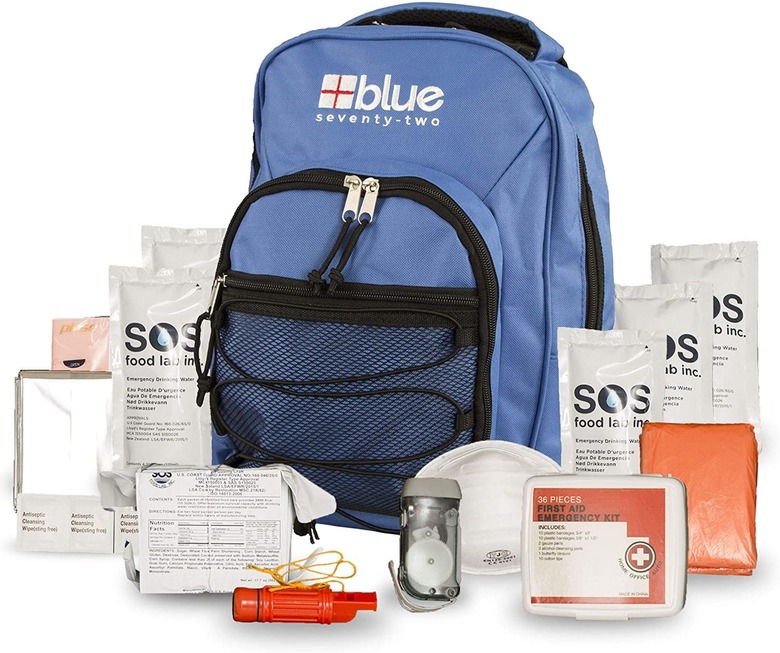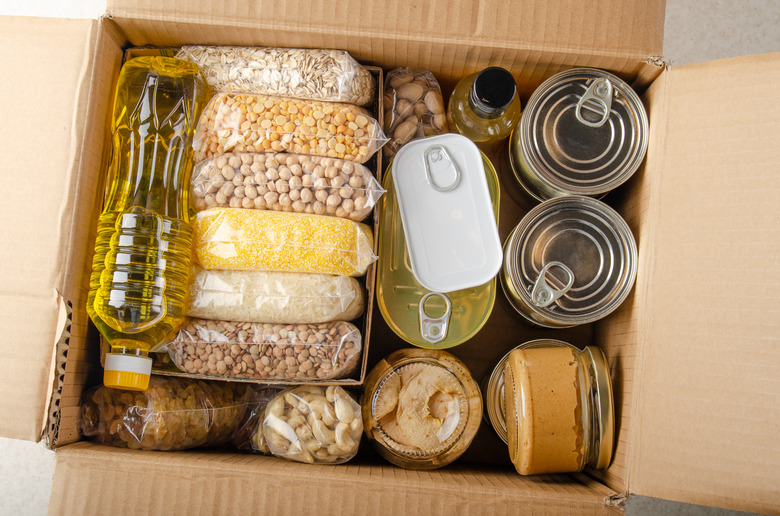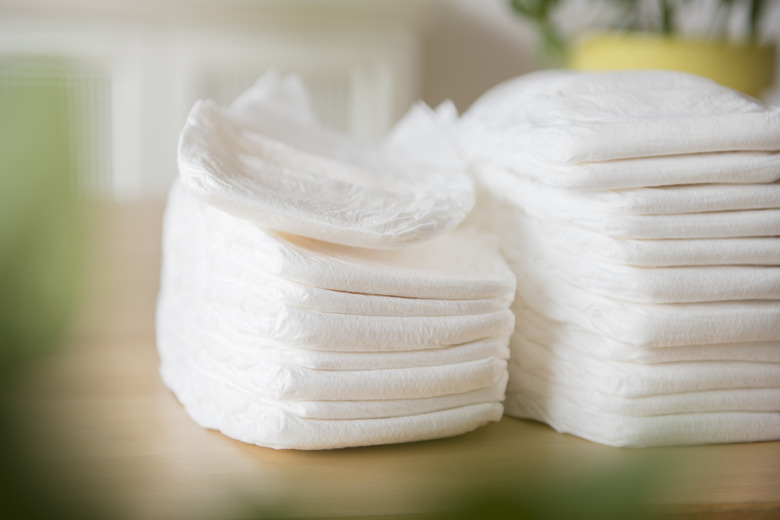The 13 Things You Absolutely Need To Include In Your Emergency Kit
We may receive a commission on purchases made from links.
No matter where you live, there is a risk of some type of natural disaster that could put you or your family in danger — as unpleasant of a thought as that is. Whether you need to be prepared for hurricanes, tornadoes, earthquakes, floods, blizzards, wildfires or any other danger, it's important to have an emergency kit ready to keep your household safe. To be effective, this kit needs to be packed and waiting to go so you aren't rushing around trying to get everything you need together in the event of an emergency. While you'll ideally never actually need to use your emergency preparedness kit, just having one ready to go can give you peace of mind.
Different Types of Emergency Kits
Different Types of Emergency Kits
How you respond to an emergency will vary based on whether you need to stay hunkered down at home or grab your survival kit on your way out the door. Kits designed for those who need to flee during an emergency are known by survivalists and safety experts as "bugout" kits, and they should contain enough supplies to last you for three days. Kits for people who need to shelter in place are larger and should have sufficient supplies to keep your family sustained and safe for two weeks.
It's important to know that while it's easy and affordable to construct your own emergency kit, you can also buy premade kits, but these are mostly made for those who must evacuate, not those who need to shelter in place. Though you could buy one single-person kit for each person in your family, it's generally a better idea to buy a kit designed for the size of your family. This won't just reduce the number of kits you'll need to keep track of and lug around but it will also save space and ensure you don't carry extra weight from items of which you only need one, such as a first-aid kit or a can opener.
1. A Good Container
1. A Good Container
Even if you're building a kit to be used at home, it's still a good idea to keep the kit in some kind of bag, bucket or other container that can be easily moved. After all, unless you have a dedicated safe room, you won't necessarily be hunkering down in the same room where you store your survival kit. Of course, if you need to leave home, it's even more important that your emergency supplies are stored in an easy-to-transport container.
Whether you go with a rucksack, bucket, backpack or even just a tote bag doesn't matter, but it should be something you feel comfortable carrying. While a waterproof container is ideal, you can use something lighter or easier to carry as long as you place items that aren't waterproof in something like zippered storage bags or garbage bags to keep them safe. Remember that you need to be able to carry the bag, so if your kit becomes too heavy for you to lift alone, divide the items into two or more containers so another family member can help move it all.
2. Water and Food
2. Water and Food
The American Red Cross recommends having 1 gallon of water per person per day for both drinking and sanitation purposes. While you should ideally have enough water to last you through the emergency, it doesn't hurt to have a portable water filter or water purification tablets as well just in case you run out of bottled water.
Similarly, you'll also need to have enough nonperishable food to sustain everyone in your family throughout the emergency. This means packing around 2,000 calories per person per day, though you may want to pack extra for those with larger appetites or less for children. Also pack a manual can opener if any of your food supply comes in cans. Be sure to also pack a pan or other tool to heat your food unless you choose to pack foods that don't need to be heated, such as dehydrated foods and protein bars. Remember to pack plates, cups, utensils and napkins unless your meals don't require them.
Remember that for an emergency kit designed to leave the house, you need three days' worth of supplies, and for one to use at home, you need two weeks' worth, so plan your food and water needs accordingly. While bottled water should keep indefinitely when stored properly, be sure to keep an eye on your food supply and cycle out expiring rations as necessary.
3. A First-Aid Kit
3. A First-Aid Kit
Emergency situations are inherently dangerous, which is why it's so important to always pack a first-aid kit. While there's nothing wrong with buying an off-the-shelf first-aid kit, be sure to add your own supplies as necessary, such as each family member's prescription medications and medical supplies, like contact lenses or hearing-aid batteries. Also include a list of emergency phone numbers. Whether you buy a premade medical kit or put one together yourself, it should include adhesive bandages, gauze bandages, gauze pads, compress dressings, cloth tape, pain reliever, antibiotic ointment, antiseptic wipes, an instant cold compress, nonlatex gloves, an oral thermometer and tweezers.
It can also be a good idea to add laxatives and anti-diarrheal medicines since emergencies can do a number on the digestive system. Pack a dust mask for each person in case the air gets contaminated with mold, smoke or other hazardous material. Due to the coronavirus pandemic, you should also pack at least one face mask per person in case you end up being in close contact with other people.
Don't forget to check the expiration dates on the medications in your kit and cycle them out as needed so you're not left with expired medicine when you need it most.
While it may not fit into your first-aid kit, be sure to pack some disinfectant in your emergency supplies to keep your space and supplies sanitary. Both Pine-Sol and Lysol can keep your space clean, but unscented bleach is still the best option because a few drops can also be used to purify water.
4. A Hand-Crank Radio
4. A Hand-Crank Radio
During an emergency, you're not going to be able to rely on your cellphone for updates nor will you want to drain your limited batteries unnecessarily, which is why a hand-crank radio is the best option for receiving news about the situation. For best results, look for a shortwave radio that can also be powered other ways, like with solar power or a conventional cord and plug, for example. Experts recommend the Katio shortwave radios as they are rugged and waterproof and can be charged with USBs, wall outlets, batteries, a hand-crank or a solar panel. Some even feature flashlights and beacon lights.
5. A Battery-Powered Flashlight
5. A Battery-Powered Flashlight
Remember that the power will likely go out during an emergency, so it's critical to have a good working flashlight with a bright, energy-saving bulb (meaning something that is not incandescent). While hand-powered flashlights are good for saving batteries, be sure to have a battery-operated one available that can be set down and used hands-free. Alternatively, a good headlamp might be a great idea so you can keep your hands free. While not necessary for most situations, a waterproof, sturdy flashlight may ensure you don't have problems no matter what happens.
6. Multiple Power Sources
6. Multiple Power Sources
Remember to bring plenty of extra batteries to ensure you'll always have your flashlight and other electronic supplies as needed. It can also be a good idea to bring a cellphone charger that can be powered multiple ways, particularly with batteries and solar power, so that you can use your cellphone when necessary. In general, avoid using your phone as much as possible to conserve battery life and keep phone lines and cell towers open for emergency calls.
7. A Multipurpose Tool
7. A Multipurpose Tool
You never know when you'll need a utility knife, screwdriver, whistle, pliers, scissors or saw during a disaster. That's why it's critical that you pack a multitool in your emergency kit. Experts tend to like the Leatherman brand because it offers a wide array of options to fit every budget and situation, so take some time choosing the right item for you — keeping in mind that you don't want to waste space or add extra weight to your pack with tools you don't need.
8. Something to Keep You Warm
8. Something to Keep You Warm
Every good emergency kit should include a weather-resistant emergency blanket per person. Aluminum space blankets are a popular option because they take up so little space, but it's hard to beat the warmth of a thick wool blanket. Some people like to pack a sleeping bag in their emergency kit as well, but others find them to be too cumbersome and large. Sleeping bags are generally more necessary for those in cold areas than those in warm climates. But no matter your climate, you might also consider some instant hand warmers as well because you can't do much with fingers that are too cold to flex properly.
It's also a good idea to pack some fire-starting tools in a to-go kit, keeping in mind that there are advantages and disadvantages to both waterproof matches and lighters. Since they're so small, it's best to pack both because you don't want one option to fail and then be left with no way to start a fire. No matter what type of emergency is common in your area, don't forget to pack a fire extinguisher as well.
9. Personal Hygiene Items
9. Personal Hygiene Items
Remember that you want to keep your space sanitary. To that end, it's a good idea to pack two rolls of toilet paper per person per week as well as any necessary feminine hygiene products. You'll also want to have hand sanitizer available as well as some no-rinse soap for greasy or dirty skin. Pack an extra set of clothes for each family member if you're preparing a shelter-at-home kit.
Be sure to make plans for a toilet. If you expect to be outdoors, a collapsible shovel is a good idea so you can dig a latrine. For those stuck inside with toilets that no longer function, consider a bucket with a tight-sealing lid or use some trash bags that can be sealed with duct tape or plastic zip ties.
10. Plastic Sheeting and Duct Tape
10. Plastic
Sheeting and Duct Tape
At home, these two supplies can be useful in blocking off your windows or doors to keep out contaminants or floodwater. On the go, plastic sheeting and duct tape can waterproof your supplies, serve as a makeshift tent, help you catch rainwater and more.
11. Your Important Documents
11. Your
Important Documents
Keep copies of each family member's birth certificate and Social Security card as well as important bank account numbers and insurance policies in a fireproof and waterproof bag. You should also take some time to prepare a family emergency plan and place a copy in this bag to help remind you of what you're supposed to do.
12. Baby and Pet Supplies
12. Baby and
Pet Supplies
If you have an infant, don't forget to keep a supply of baby food, diapers, wipes, formula and bottles as well. Similarly, be sure to keep any necessary collars, leashes, pet IDs, bowls and carriers for each of your animals as well as a sufficient supply of food and water for each pet.
13. A Deck of Cards
13. A Deck of
Cards
Natural disasters are terrifying, but when you're stuck in one place waiting for the emergency to end, it's also incredibly boring. While you don't want to take up tons of space for entertainment activities, a pack of cards can provide hours of entertainment and dozens of different games (and most importantly, a welcome distraction).



